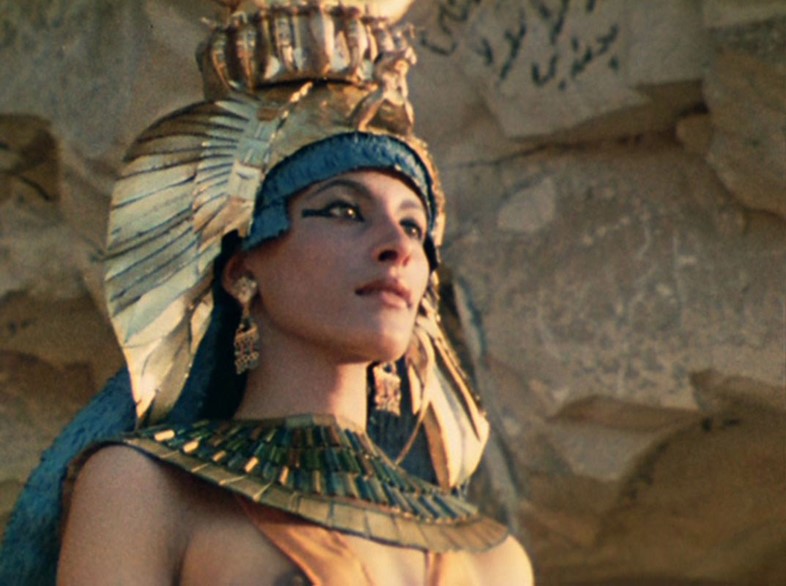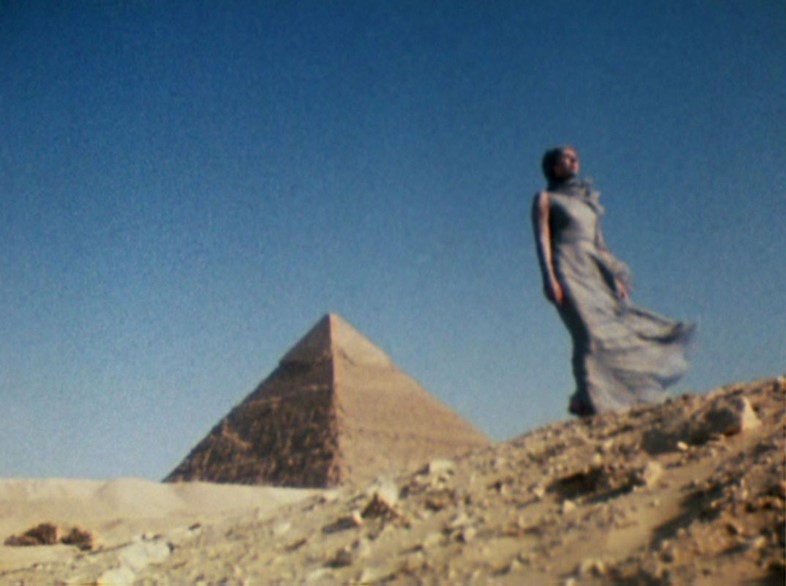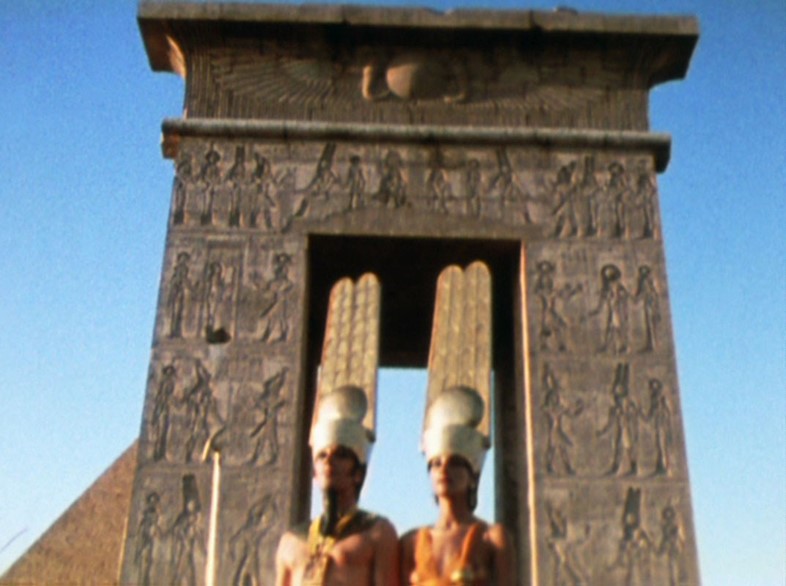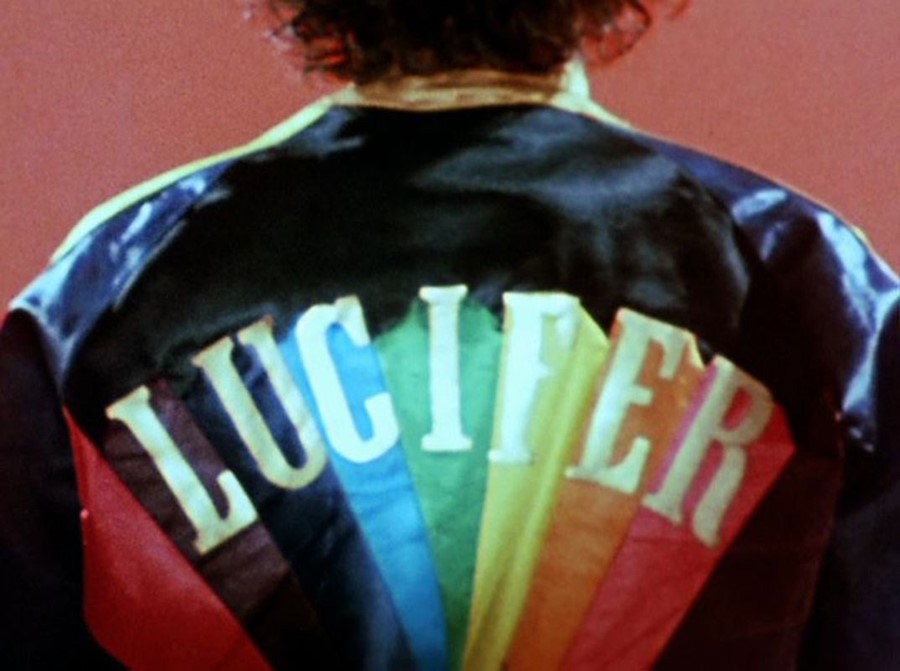Kenneth Anger's cult masterpiece Lucifer Rising is a cinematic feast for the eyes, with many sartorial lessons to teach us
Lucifer Rising (1972) was the final instalment to director Kenneth Anger’s Magick Lantern Cycle collection. The production process took ten years and during that time Anger collaborated with Led Zeppelin guitarist Jimmy Page, Marianne Faithfull, and the infamous Charles Manson associates Bobby Beausoleil and Chris Jagger. Stripped to its bones, the film is about Egyptian gods summoning the angel Lucifer through various ceremonies and rituals. It deals with spiritualism, mythology and occultist religion – in particular of the order Thelema, founded by Aleister Crowley. Anger was a proclaimed Thelemite and through Lucifer Rising he introduces us to a new occult age.
Watching any of Anger’s creations feels like dream logic; his worlds only make sense to those inside of them. Lucifer Rising is the product of unlocking the subconscious and unleashing imagination. It is a museum showing collections of dreams, surreal art, fashion and mythological history, as well as pop-culture icons. Re-watching the film we were hypnotised all over again: shots switch erratically, symbols flicker subliminally across the screen, colours are intoxicating and the costumes are enviable – magic and otherworldly in their own right. Here, we list five of the sartorial lessons to learn from such a cinematic feast for the eyes.

1. The devil is in the detail
Three minutes in, we are introduced to the Egyptian Goddess Isis (played by Myriam Gibril). She is lying on an ancient ruin by the River Nile wearing an orange dress that would be easily coveted today: straps sit in-between her breasts, the waistband is wide and corset-like, from it falls a softly pleated skirt. Heavy gold and jewelled earrings dangle down under Isis’ turquoise, gold and red headdress; and a stone-embellished gorgerine sits over her shoulders and across her chest. The design honours Egyptian tradition and is magnificent in its attention to detail – from the textured gold armbands to the Egyptian ankh symbol she holds in her hand.

2. Embrace earthly magick
The Goddess Lilith has many origins, synonymous with the moon, the night, fertility and supposed demonic seduction. In the film, when we see Lilith (Marianne Faithfull) awaken in a stone tomb, she is painted lilac and wears a floaty chiffon dress and headscarf. As shots intermit between her and the full moon, it appears as if she is bathing in its ethereal purple light. Then, walking into the desert, her colouring becomes silvery green as she embraces the sun’s rays and powerful winds with open arms. Later on we see her dressed in dark grey blazer and skirt. Here she cries and screams while shots of stormy skies and rain interrupt the scene. Lilith links the spiritual world and earth: she feels and mirrors nature’s power.

3. Red and green should always be seen
Contrary to the sing-song fashion rule, in Lucifer Rising red and green pair perfectly, symbolising fire and earth, death and birth or rebirth. It is hard to find one shot where either hue doesn’t feature in the lighting, set or costume. Beausoleil drips in blood as he gets into a moss-green bathtub. The Magus (played by Anger) is dressed in a red robe as he runs around a green sacred circle, which features bright red symbols and names of Gods and Goddesses. A red blanket embroidered with a pentagram covers a green portrait of Aleister Crowley. Osiris appears with a painted green face. Meanwhile, Isis basks in a red light before appearing in a pale green dress and signalling to red flying saucers. Anger exploits red and green’s conflict, using them to amplify what is unearthly, carnal and mystic.

4. Flowers aren’t just for decoration
The film reframes the relationship between women and flowers through mythology and symbolism. We see a white rose, which often signifies mourning and reverence, attached to a heeled sandal. The owner – wearing red tights with one leg elevated in the air – remains anonymous. But from the smashed glass table, Lilith’s distress and the fact roses were painted on the walls of Egyptian tombs, we guess their fate was tragic. Then Lilith crumples a small bouquet of purple Iris. The messenger Goddess Iris was said to guide the dead, linking heaven and earth. Later on, Isis holds a lotus flower and begins to smile before bowing her head as it blossoms. Both Isis and the lotus symbolise the sun and creation. When Lilith falls to the floor, a closed poppy – symbolising sleep, peace and death – flashes on screen. She also touches a growing sunflower and it instantly dies. Mother Nature is always telling us something.

5. Don’t limit yourself
Lucifer utilises spiritual power and continuously shifts his identity. More so than the other characters, his makeup and costumes are garish and extravagant. Upon his summoning, Lucifer wears the iconic rainbow bomber jacket with his name shooting from gold star emblazoned across the back. In the following scenes, we see Lucifer in four different looks. He wears a tapestry printed and then a yellow and red silk robe. He is painted red, wearing a fez hat and blouson sleeve silk shirt with an exaggerated pointed collar. And then he switches to a black and white striped look, featuring a tied silk scarf and silver gladiator-like disc belt. Ignoring sartorial limitations, Lucifer is an identity chameleon.
